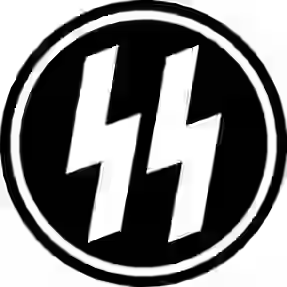SS-Mann
Meaning: Trooper
The SS-Mann (also spelled SS-Man) was the lowest enlisted rank in the Waffen-SS, equivalent to a private in modern militaries. Established in 1925 with the formation of the Schutzstaffel (SS), this rank represented the entry-level position for recruits joining the Waffen-SS, the combat arm of the Nazi Party’s elite paramilitary organization. SS-Mann recruits underwent rigorous ideological and physical training to align with the SS’s strict standards, preparing them for roles in combat, security, or concentration camp duties during World War II. This rank was foundational to the SS hierarchy, marking the beginning of a soldier’s career in one of history’s most infamous military organizations.
The role of an SS-Mann was primarily that of a foot soldier, tasked with executing orders from higher-ranking non-commissioned officers like Scharführer or Untersturmführer. SS-Mann soldiers served in various capacities, from frontline combat in divisions like the Leibstandarte SS Adolf Hitler to auxiliary roles in rear echelons. Their duties included basic infantry tasks, guard duties, and supporting tactical operations under direct supervision. The rank’s simplicity belied its significance, as SS-Mann formed the backbone of Waffen-SS units, embodying the organization’s ideological fervor and martial discipline.
The insignia for an SS-Mann was minimal, featuring a plain black collar tab with no pips or stripes, distinguishing it from higher ranks. This simplicity made it a common yet coveted item among militaria collectors, who value its historical context within the WWII German military. The lack of ornate design reflected the rank’s junior status but also its widespread use across SS divisions. Collectors and historians seek SS-Mann insignia for its authenticity and as a tangible link to the broader SS hierarchy.
Today, the SS-Mann rank remains a focal point for WWII historians, reenactors, and militaria enthusiasts. Its study provides insight into the structure and ideology of the Waffen-SS, as well as the broader Nazi military apparatus. The rank’s historical significance, combined with its collectible insignia, ensures its relevance in academic research and militaria auctions, where authentic pieces are highly prized. The alternative spelling SS-Man enhances searchability, making it accessible to a global audience interested in WWII German military history.
